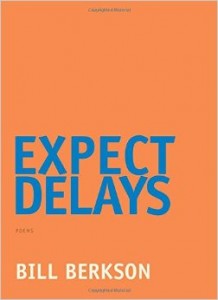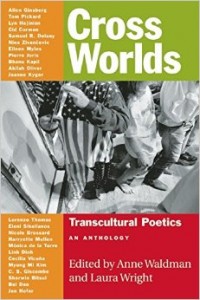Being the poet and voracious reader that I am, I am always reading several poetry books simultaneously. What follows below are reflections on four recent works of poetry.
*
Kern
By Derek Beaulieu
Les Figues Press
Ordinary language can hardly do justice to these poems by Derek Beaulieu. Utilizing signs, logos and slogans, these suggestive glyphs make for unprecedented concrete poetry. Beaulieu is a renowned member of the Poetry avant-garde and is currently the Poet Laureate of Calgary, Canada. In his author’s note, Beaulieu writes, “Kern is made by using dry-transfer lettering without the use of computers. Ubiquitous in graphic design, technical drafting, and advertising from the early 1960s to early 1990s, dry-transfer lettering was used in order to standardize graphic elements, eliminate the individuality of the artists’ hand, and speed up the creative process.” He constructs these poems without the help of plans or sketches, creating each one by hand a letter at a time. The resulting image-field created by Beaulieu is similar to an abstract painting and can even be called otherworldly. Marjorie Perloff says these poems, “present moments of poetic nostalgia for the signposts of a past that never fully existed.”
This book is the latest in Les Figues’s “Global Poetics Series,” and definitely carries on their reputation of pushing poetic boundaries. The book begins with simple logos and gradually evolves and explodes into complicated constellations. As the author writes, “These poems are the street-signs, the signage, and the advertising logos for the shops and corporations that are just beyond reach. They are not islands of meaning—semantic or corporate.” Similar to the “performative typography” espoused by Douglas Kearney, these poems present arresting images that transcend tradition or even description. Beaulieu “occupies the page in the same way that the Nike swoosh sits on a shoe, or how the neon overwhelms the Tokyo streetscape.”
*
Expect Delays
By Bill Berkson
Coffee House Press
The poet, critic and professor Bill Berkson splits his time between San Francisco and Manhattan and can rightfully be called a member of the New York School of poets. The 50 plus poems in this collection move between sentimental odes to his wife, son and mother to abstract meditations on art, pop culture and philosophy. His “Songs for Bands” cycle of poems utilizes aphorisms, observations and sarcasm and journal entries to create a panoramic window into his belief system with lines like, “Aesthetics is the ethics of the present.” Other times his humor comes out, “Oxygen Mask/Ogden Nash.” One of the poems, “Snippets,” mixes his memories of his good friends like Frank O’Hara and John Ashbery with dry humor and dreamlike sentences.
His section called “16 Acrostics in Love and Friendships,” is the most straightforward. These acrostic poems for his mom, wife, son, daughter, daughter in law and various other friends blend clever poetry with honest and straight emotion. The poem for his mother’s 100th birthday combines sincerity and style in a precise acrostic form that spells his mother’s name vertically down the page. These occasional poems ground the book and reveal the size of Berkson’s heart. His appendix, “Notes on Some of the Poems,” further illuminates his techniques. This work combines difficult poetry with straightforward honesty rarely seen in contemporary poetry. Berkson’s strength is his versatility. The wide range of poems in this collection show how well rounded and experienced the man is.
*
Otherwise, My Life is Ordinary
By Bobby Byrd
Cinco Puntos Press
Bobby Byrd’s poetry is cut from the same cloth that was worn by William Carlos Williams. Byrd writes about working in the garden and everyday conversations. The 50 poems in this collection as Luis Alberto Urrea notes, “are made of memory, love, place and a kind of bluesy Zen.” Byrd grew up in the South, Memphis, Tennessee to be specific and now lives in El Paso, Texas. The poems in this book are prefaced by a potent essay, “How Did This Happen?” Among many insightful passages in this preface, he says, “I used to tell my kids, and now I tell my grandkids that I’d be dead without black music. Race music. 1950s Memphis music. It was a cultural revolution for us white kids growing up in the South.” The influence of soul permeates every page. Byrd uses poetry to turn the lens on himself and his revelations are both profound and funny simultaneously.
Another passage from his Introduction offers an excellent summary of his work. Byrd writes: “My poetics are simple enough. Nothing new really. No manifesto. I believe in those experiences that open up holes in understanding. Sometimes it’s a word or phrase spoken on the street; other times I can be watching a beetle climbing lonesome down a concrete curb or my beloved and I can be making love. I think of these times as a spiritual experience because I let go.” With poems like “Poetry is Waiting for me in the Other Room,” and “I Make a Good Pot of Beans,” Byrd demonstrates his expertise at making the ordinary into something extraordinary. This poet is a master craftsmen and it shows in every poem.
*
Cross Worlds: Transcultural Poetics
Edited by Anne Waldman & Laura Wright
Coffee House Press
This anthology covers a wide range of languages, geographies and political realities. The essays and conversations collected in this work annotate and interrogate what occurs when poets write across borders. The 35 passages cover a range of places, disciplines and cultural hybrids presented in the world of international poetry. One of the first chapters, Allen Ginsberg’s essay, “Spontaneous Poetics: Australian Aboriginal Song Sticks,” set the precedent of the book’s spirit. Ginsberg writes about their use of the oral tradition and how his understanding of their methods informed his own work. He says, “I want to pick up on the idea of communal consciousness in poetry to expound something that I’ve been exploring a lot lately as a basis for prosody, a basic approach to measuring lines of poetry. My own preoccupation has been increasingly with spontaneous utterances or spontaneous forms, so I’ve been experimenting a lot with that.” Ginsberg describes the Australian Aboriginal poetic practice and the utilitarian role poetry plays in their auditory imagination. He continues, “They don’t have a written language so that anything that enters their ear they can remember, they can pick up anything rhythmical, anything poetical that they hear they can reproduce almost instantly.” As the essay continues, he marvels at the auditory power of their work and then describes how used his understanding of their techniques to bolster his own oral delivery. He then describes how he adapted some of their song structure into his own work and then includes a poem he constructed using these methods.
The essays cover everything from translations, the ethics of poetry, the female shamanic tradition, Arabic poetics, hip-hop culture, geographic distortions to the ethnopoetics of Jerome Rothenberg. Contributing voices include Cid Corman, Victor Hernandez Cruz, Monica de la Torre, Samuel Delany, Linh Dinh, Ginsberg, David Henderson, Lyn Hejinian, Jen Hofer, Joanne Kyger, Harryette Mullen, Eileen Myles, Lorenzo Thomas and Karen Tei Yamashita among many others. This collection presents an excellent snapshot of contemporary international poetry. The editors Anne Waldman and Laura Wright draw the work from the archives of the Jack Kerouac School of Disembodied Poetics in Naropa, Colorado. The volume’s title “Cross Worlds: Transcultural Poetics,” is aptly named.
The aforementioned four poetry titles represent 21st Century verse with tremendous veracity. Scholars, students and poetry fans alike will all find inspiration and delight in these works.




